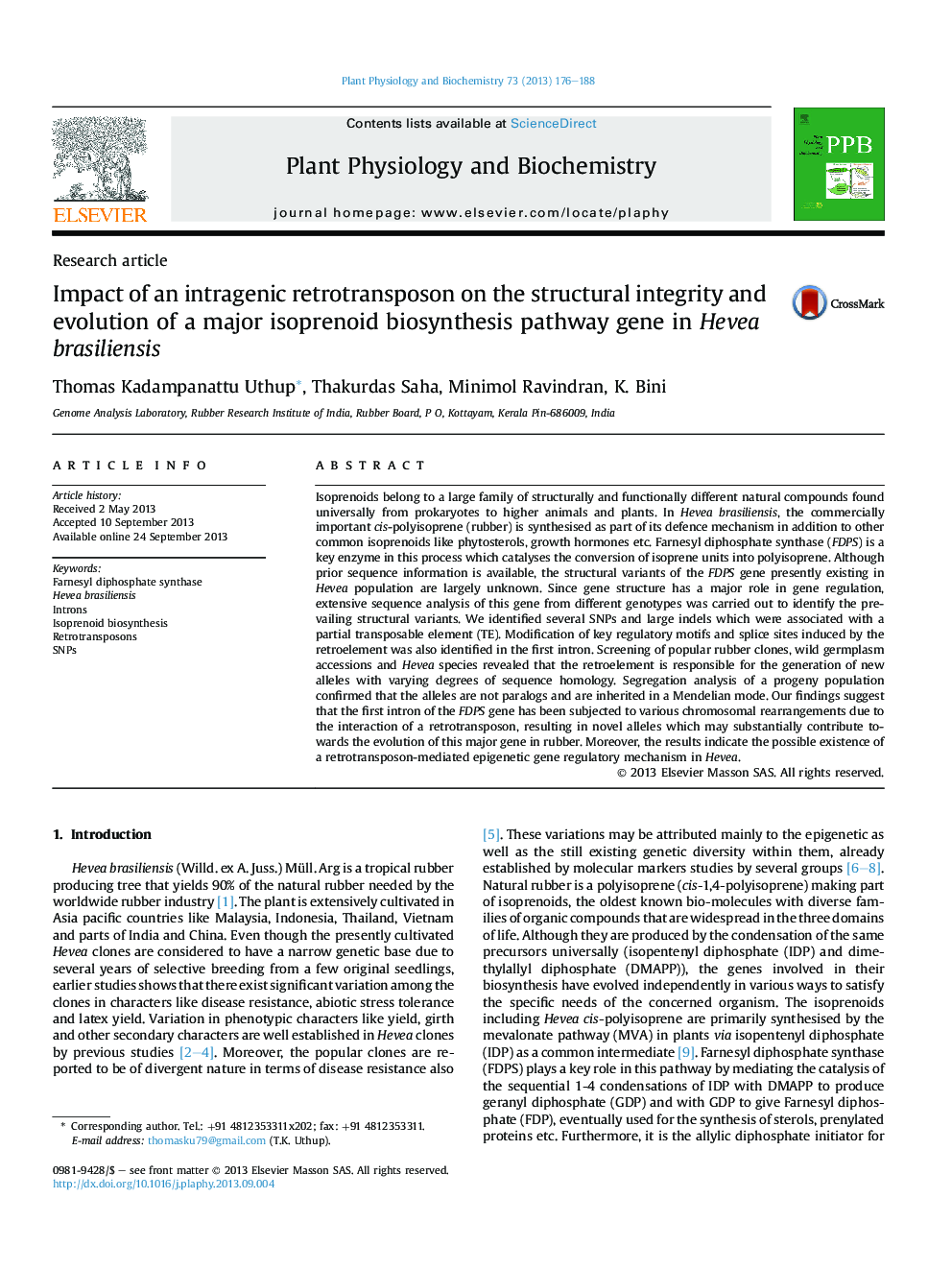| Article ID | Journal | Published Year | Pages | File Type |
|---|---|---|---|---|
| 8355156 | Plant Physiology and Biochemistry | 2013 | 13 Pages |
Abstract
Isoprenoids belong to a large family of structurally and functionally different natural compounds found universally from prokaryotes to higher animals and plants. In Hevea brasiliensis, the commercially important cis-polyisoprene (rubber) is synthesised as part of its defence mechanism in addition to other common isoprenoids like phytosterols, growth hormones etc. Farnesyl diphosphate synthase (FDPS) is a key enzyme in this process which catalyses the conversion of isoprene units into polyisoprene. Although prior sequence information is available, the structural variants of the FDPS gene presently existing in Hevea population are largely unknown. Since gene structure has a major role in gene regulation, extensive sequence analysis of this gene from different genotypes was carried out to identify the prevailing structural variants. We identified several SNPs and large indels which were associated with a partial transposable element (TE). Modification of key regulatory motifs and splice sites induced by the retroelement was also identified in the first intron. Screening of popular rubber clones, wild germplasm accessions and Hevea species revealed that the retroelement is responsible for the generation of new alleles with varying degrees of sequence homology. Segregation analysis of a progeny population confirmed that the alleles are not paralogs and are inherited in a Mendelian mode. Our findings suggest that the first intron of the FDPS gene has been subjected to various chromosomal rearrangements due to the interaction of a retrotransposon, resulting in novel alleles which may substantially contribute towards the evolution of this major gene in rubber. Moreover, the results indicate the possible existence of a retrotransposon-mediated epigenetic gene regulatory mechanism in Hevea.
Keywords
Related Topics
Life Sciences
Agricultural and Biological Sciences
Plant Science
Authors
Thomas Kadampanattu Uthup, Thakurdas Saha, Minimol Ravindran, K. Bini,
